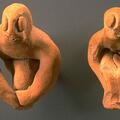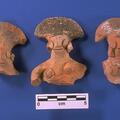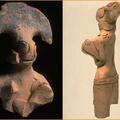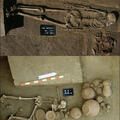Men of Harappa A
Although there are fewer male than female figurines to be found at Indus sites, these terracotta males from Harappa give some sense of the principles underlying their representations. Shari Clark writes: "After many decades of research, the Indus Civilization is still something of an enigma -- an ancient civilization with a writing system that still awaits convincing decipherment, monumental architecture whose function still eludes us, no monumental art, a puzzling decline, and little evidence of the identity of its direct descendants.





